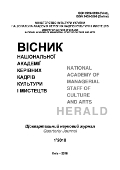CONSTITUENT ELEMENTS OF GREEN AND YELLOW GLAZE IN THE POTTERY BRICKS OF PERSEPOLIS
DOI:
https://doi.org/10.32461/2226-3209.1.2018.178817Abstract
Abstract. This research paper is devoted to identifying the glazed Achaemenid bricks in Persepolis. So far,
some studies have been carried out on the introduction on these bricks, but technical studies have not been
conducted. The glazed bricks reviewed in this paper are white, light green, dark green, dark brown, grey and yellow, and each color is surrounded by azure blue lines and separated from each other. Using X.R.D, S.E.M, D.T.A, T.G.A methods and more chemically, the bodies and glazes are identified, the body of this type of bricks is a very porous silica body. The light green, dark green and yellow glazes are made of lead. In the combination of all glazes, there are iron and magnesium, which probably existed in the original composition (base glaze), besides the color effects of impurities. After the extraction of the results of each test separately, the results were compared and the purpose of these tests was to recognize the glazes applied in these pottery bricks and this research is the result of laboratory studies of the authors.
Key word: Persepolis, clay bricks, wet chemistry method, Yellow glaze, Green glaze, Lead glaze.
References
Abbasian, Mir Mohammad (1991), Glazing Industry and its Colors, Tehran: Gothenburg Publishing.
Pampuch, Roman (1976), Ceramic Materials: an introduction to their properties, Elsevier Scientific Pub.
Walter, Andrea (1955), Coloured Ceramics from Ashur and Earlier, Ancient Assyrian Wall Paintings, London.
Barsoum, Michel W. (1997), Fundamentals of ceramics, NewcYork, McGraw-Hill.
Sabia, Robert (1999), Einishing of Advanced Ceramics and Glasses, USA, The American Ceramic Society.
Downloads
Issue
Section
License
Authors who publish with this journal agree to the following terms:
1. Authors retain copyright and grant the journal right of first publication with the work simultaneously licensed under a Creative Commons Attribution License International CC-BY that allows others to share the work with an acknowledgement of the work's authorship and initial publication in this journal.
2. Authors are able to enter into separate, additional contractual arrangements for the non-exclusive distribution of the journal's published version of the work (e.g., post it to an institutional repository or publish it in a book), with an acknowledgement of its initial publication in this journal.
3. Authors are permitted and encouraged to post their work online (e.g., in institutional repositories or on their website) prior to and during the submission process, as it can lead to productive exchanges, as well as earlier and greater citation of published work (See The Effect of Open Access).


